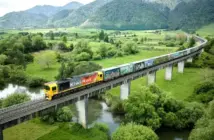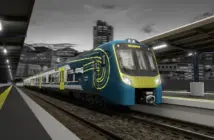A new report by Doppelmayr New Zealand reveals that in our busiest cities, urban cable car solutions could shave 30 minutes off a commuter’s travel time and reduce congestion as they have done overseas

Instituto De Desarrollo Urbano
Doppelmayr New Zealand has taken the next step in its ambition to enter New ZealandŌĆÖs public transport market through the release of its Urban Transport Solutions Report, which makes the case for urban cable car solutions in Aotearoa.
The Report shares the findings of an independent strategic level analysis by transport planning and engineering specialists Abley, which identified 20 locations around the country where there is a case for an urban aerial cable car. Doppelmayr New Zealand intends to pursue a shortlist of 10 sites across Auckland, Wellington, Christchurch and Queenstown ŌĆō with its sights set on Auckland and Wellington in the short term.
| Scheme | Route | Strategic value |
| T─ümaki Makaurau / Auckland | ||
| Airport to Botany | Airport ŌĆō Puhinui Railway Station ŌĆō Manukau CBD ŌĆō Botany |
|
| Airport to Onehunga | Airport ŌĆō Mangere Town Centre ŌĆō Mangere Bridge ŌĆō Onehunga |
|
| Te Atat┼½ to Henderson, via Busway | Te Atat┼½ ŌĆō Northwestern Busway ŌĆō Henderson |
|
| Te Whanganui a Tara / Wellington | ||
| Airport to CBD | Airport ŌĆō CBD ŌĆō Wellington Railway Station |
|
| Island Bay to CBD | Island Bay ŌĆō Newton ŌĆō Wellington Hospital ŌĆō CBD ŌĆō Wellington Railway Station |
|
| Karori to CBD | West Karori ŌĆō East Karori ŌĆō CBD |
|
| Wainuiomata to Hutt Valley | Wainuiomata ŌĆō Waterloo Rail ŌĆō Hutt Town Centre |
|
The other shortlisted sites are a Queenstown Airport to Town Centre route, and two routes from Christchurch CBD – one to the Airport and another to Belfast.
Doppelmayr New Zealand CEO Garreth Hayman says the business is focusing on Auckland and Wellington due to the proven potential for aerial cable cars to address key transport challenges and provide urban development opportunities in both cities.
ŌĆ£Doppelmayr’s experience is that aerial cable car systems offer a range of benefits to urban environments under pressure from growth and increasing vehicle congestion, and while cities endeavour to meet ambitious climate targets. We have done extensive research with local experts to assess the feasibility of integrating aerial cable cars into New ZealandŌĆÖs major cities.
ŌĆ£The sites we are looking at across Auckland and Wellington will save passengers up to 29 minutesŌĆÖ travel time in comparison to the existing public transport systems. We know these solutions work because we have seen them in action in large international cities ŌĆō where they complement existing transport networks and are incorporated into existing buildings, underground stations, airports and housing developments,ŌĆØ says Hayman.
Three of the transport links Doppelmayr intends to pursue would connect the Auckland and Wellington airports with suburbs that do not have a strong existing public transport solution, says Hayman.
ŌĆ£Mobility in and around many airports across the world are facilitated by a Doppelmayr cable car, such as the recently installed Luton airport DART in the United Kingdom. The solutions proposed for New Zealand would reduce congestion and pressure on the existing transport networks, with capacity to transport up to 6000 people per hour between main transport links and suburbs.ŌĆØ
Doppelmayr New Zealand will partner with the appropriate planning and transport agencies to progress the investigation of these opportunities. The business is also seeking private/public financing or equity agreements to facilitate the implementation of New ZealandŌĆÖs first aerial cable car.
ŌĆ£Worldclass cities require worldclass infrastructure and innovative, effective transport solutions. As part of an integrated network, aerial cable cars provide new possibilities by making use of the currently unused aerial level ŌĆō one that is not hindered by other modes of transport. We are motivated by the opportunity to introduce public transport solutions in New Zealand that will complement, extend and fully integrate with existing train, bus and ferry services, as we have successfully done around the world,ŌĆØ says Hayman.
Key findings from the Doppelmayr Abley study include:
- Aerial cable cars can address several of the key transport challenges facing New Zealand cities, including congestion, air and noise emissions as well as severance between our communities and the places we work, live and enjoy
- Fundamentally, the aerial cable car offers a reliable, efficient and low emission transport mode, addressing regional and urban congestion and enhancing connections between communities.┬Ā Doppelmayr cable car systems can transport up to 8000 passengers per hour
- There are no significant planning or consenting impediments to the introduction of an aerial cable car system for public transport purposes in New Zealand
- Unlike the significant disruption and related network impacts when installing heavy solutions such as with rail-based systems, cable cars can be installed with a minimum of disruption and in a shorter period. In comparison to other on-road means of transport, the overall advantages of aerial cable cars are significant.








